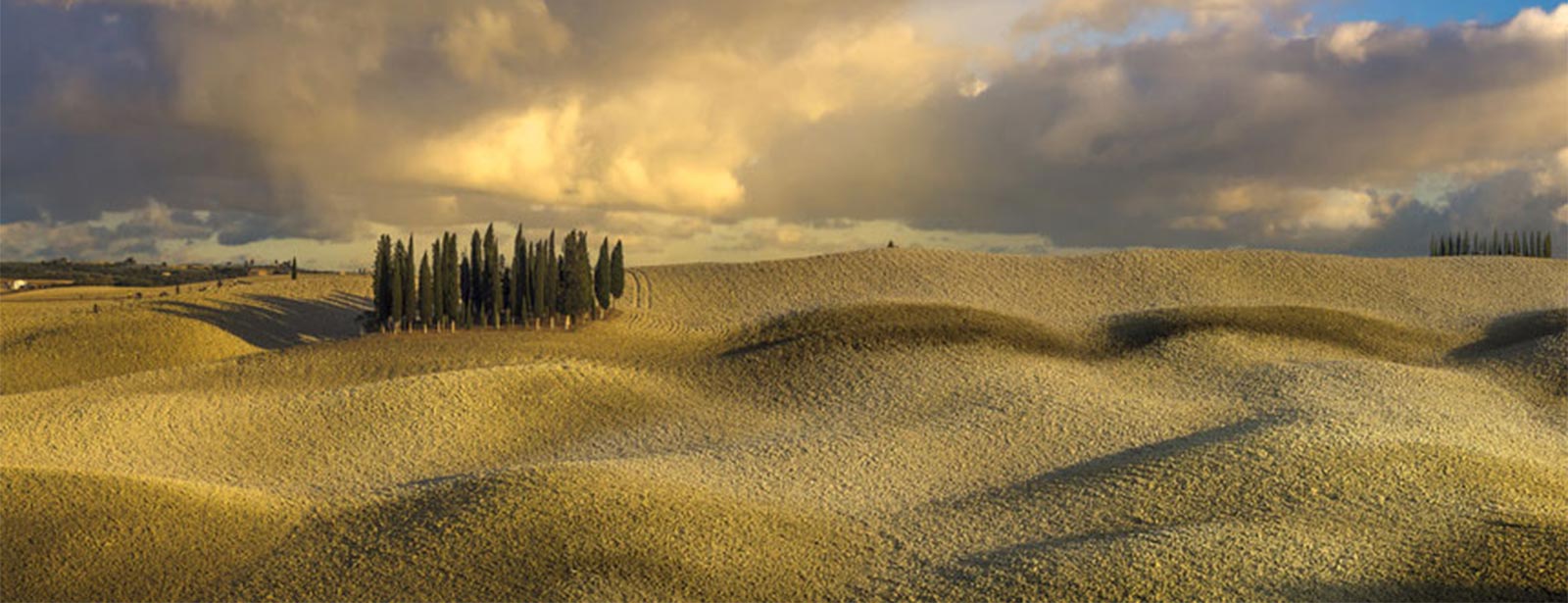
The landscape of the Val d’Orcia is characterized by a show of unabated hills. The highway Cassia only marks the medieval path that moves between Florence and Bolsena, in the province of Viterbo, 20 to 35 kilometers to the west of the original Roman road: on the way we can admire the main centers of San Quirico, Castiglione d’Orcia, Radicofani, and the diverticulum to the Chiana Valley, Pienza and Montepulciano.
It is with the great road linking Rome to northern Italy and the transalpine countries – which is why it was called Francigena – the valley of the settlement system is He increased significantly around the X-XI century, historical period in which ‘ emergence of feudalism led to the organization of a system of castles and forts. The story blends with the environment characterizing the course of the visit: the landscapes are lost in the historical records of the Val d’Orcia.
The historic road, traveled already in 1093 by Sigeric, Archbishop of Canterbury, emerges with generous highlight its massicciato from the ground, explaining the reason for many architectures apparently scattered today in the case of the hills: we think of the complex system of churches and castles, villages a shining time and now reduced to meager fractions.
In the rest of Siena (the Etruscan Sena, the Saena Julia Roman, the Lombard Siena) places of history together down a course of three millennia.
This fascination, which emerges when we visit these places, leaving unknown factors of mystery that characterizes our itinerary in the Val d’Orcia.
It should be reminded that the frequent transit of people and goods along the main road, has meant that some of the towns adopted an especially weight all’interviabilità for Valdichiana.
At this point it is clear the interest to the control of this valley by the Republic of Siena.
The Senese Valdichiana expansion can be considered closed in the fifteenth century; the period coincides with a different arrangement of roads and urban centers. The Republic undertook to implement the Orcia bridge between Bagno Vignoni and Rocca d’Orcia; He made the final move of the track of the Roman road from the valley of the Paglia towards Radicofani, with its fortress that would have guaranteed better control; provident of new fortifications all the towns in the valley.
After the mid-sixteenth century, Florentine orbit entry along with the domains of Siena, Val d’Orcia retains value only as an agricultural area; in conjunction with the reclamation of the viability Valley in San Quirico to Pienza – Montepulciano and Chiusi is to assume a leading role. Role that the recent growth of Chianciano Terme reiterated.






